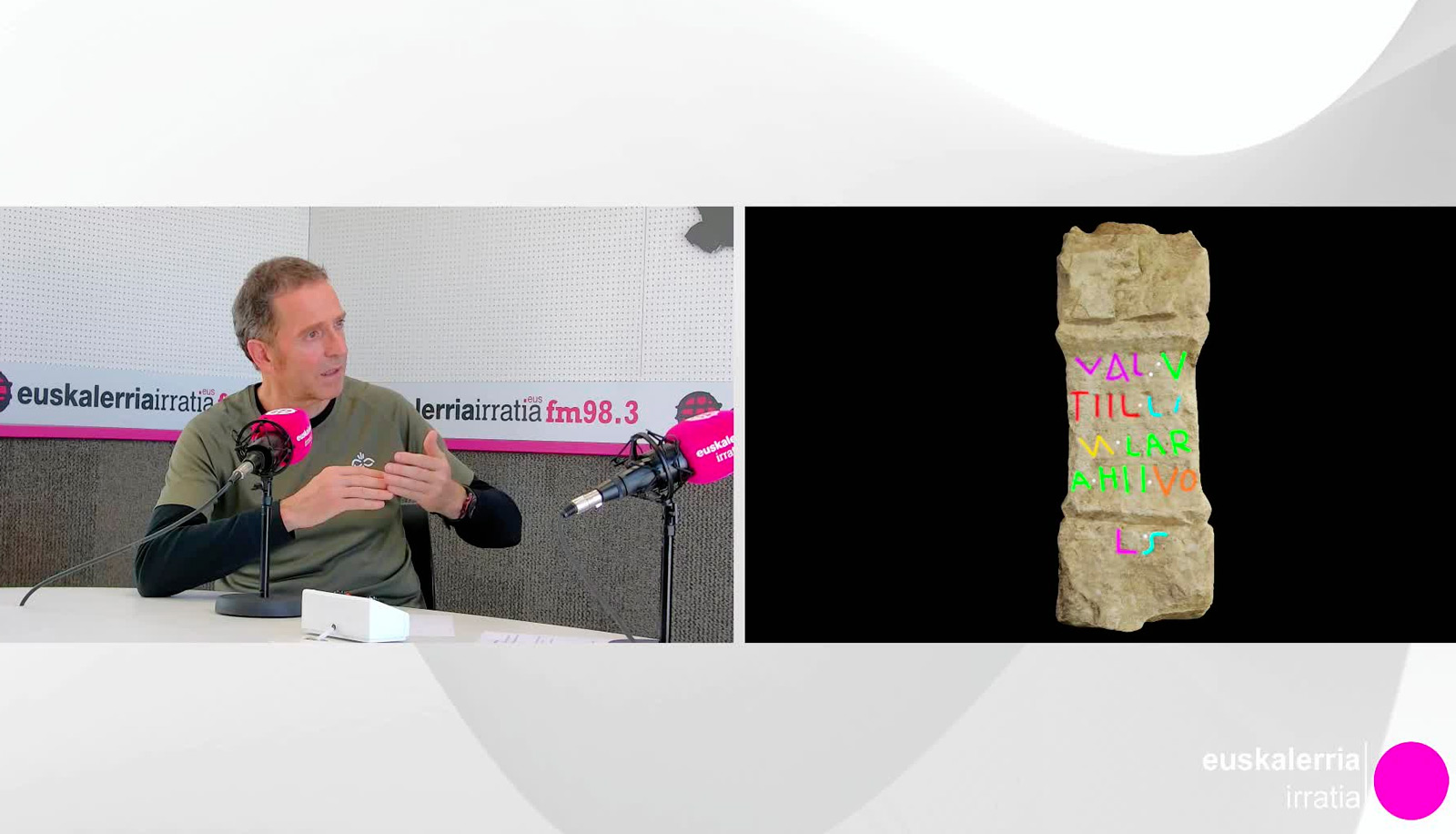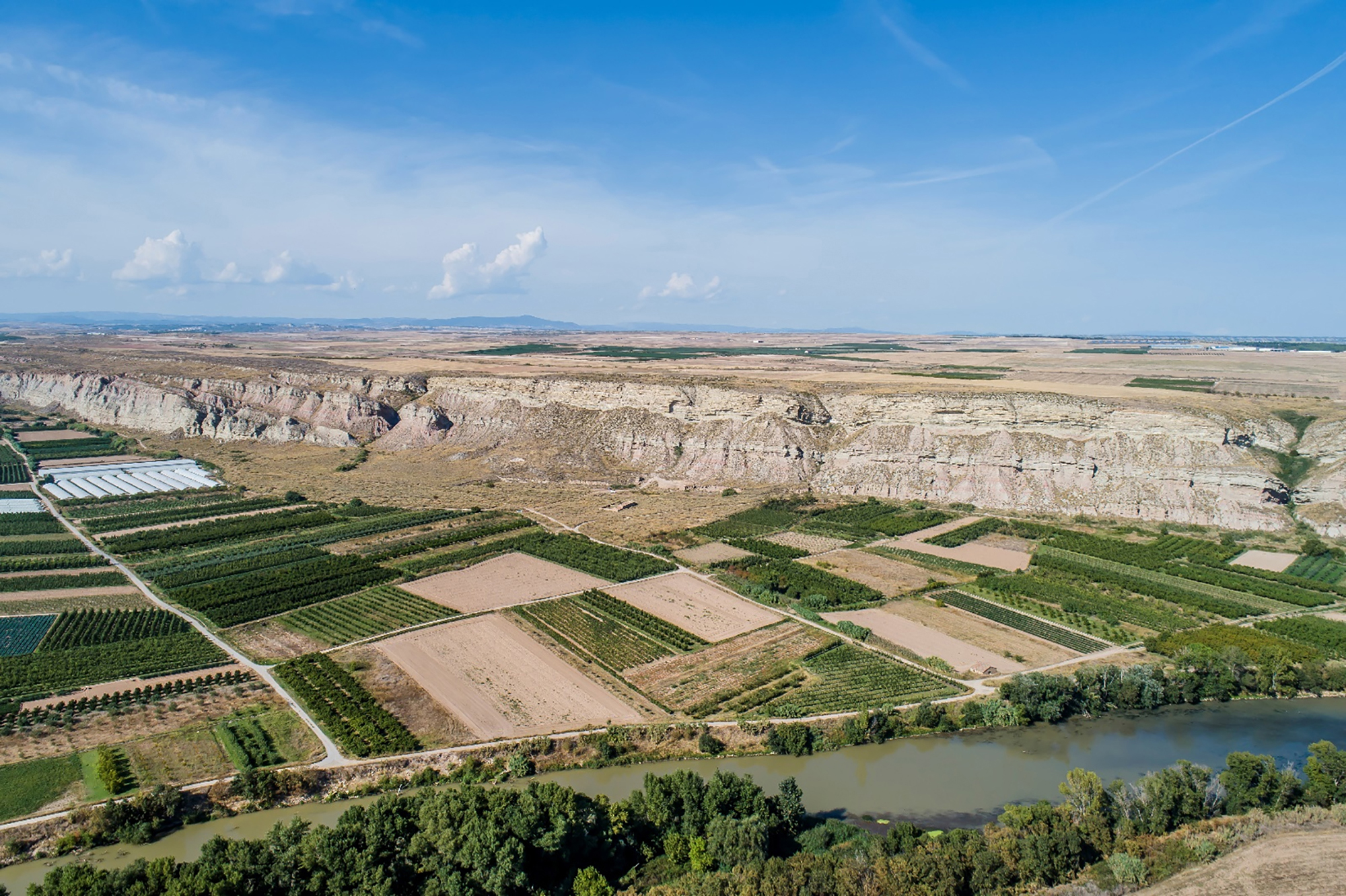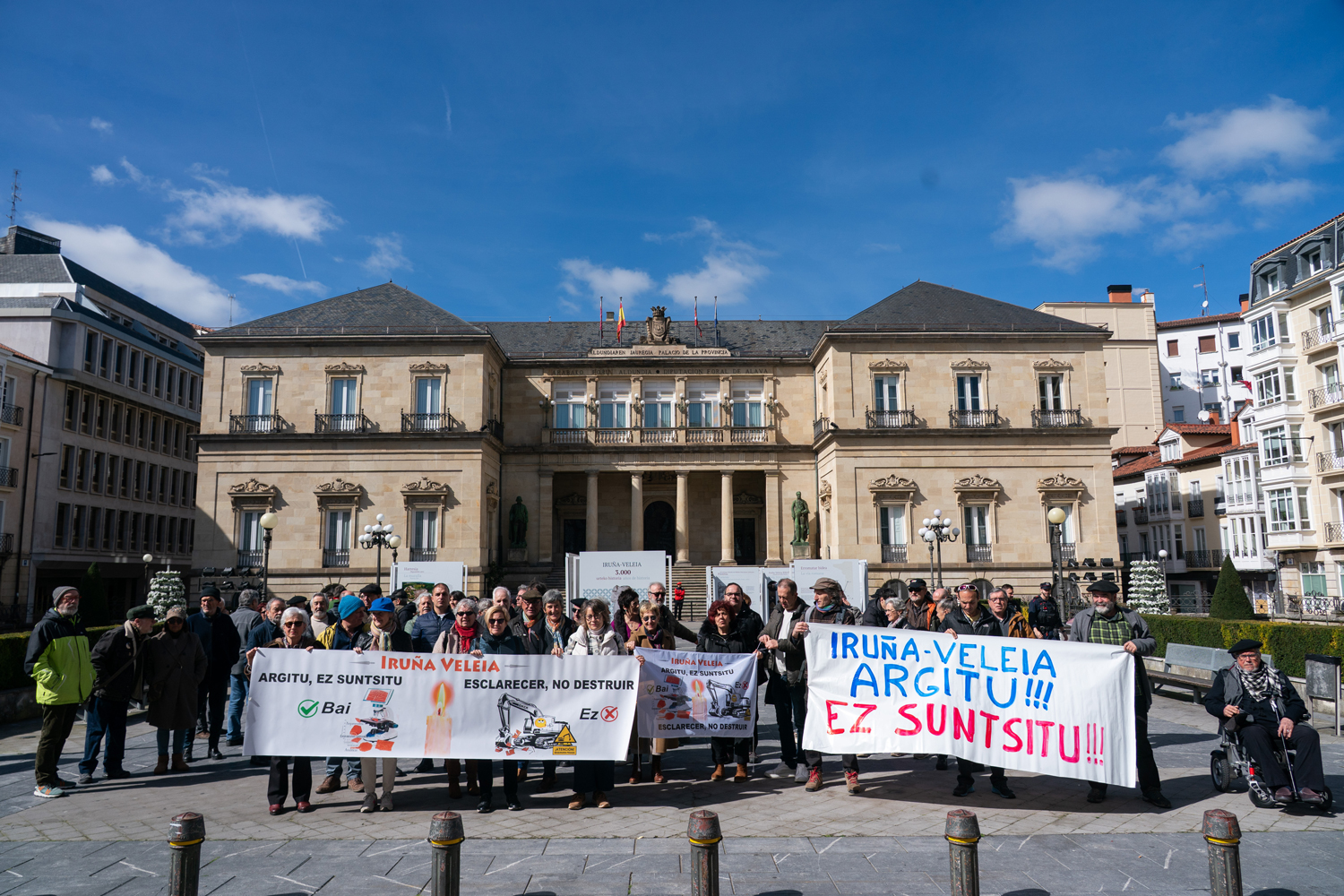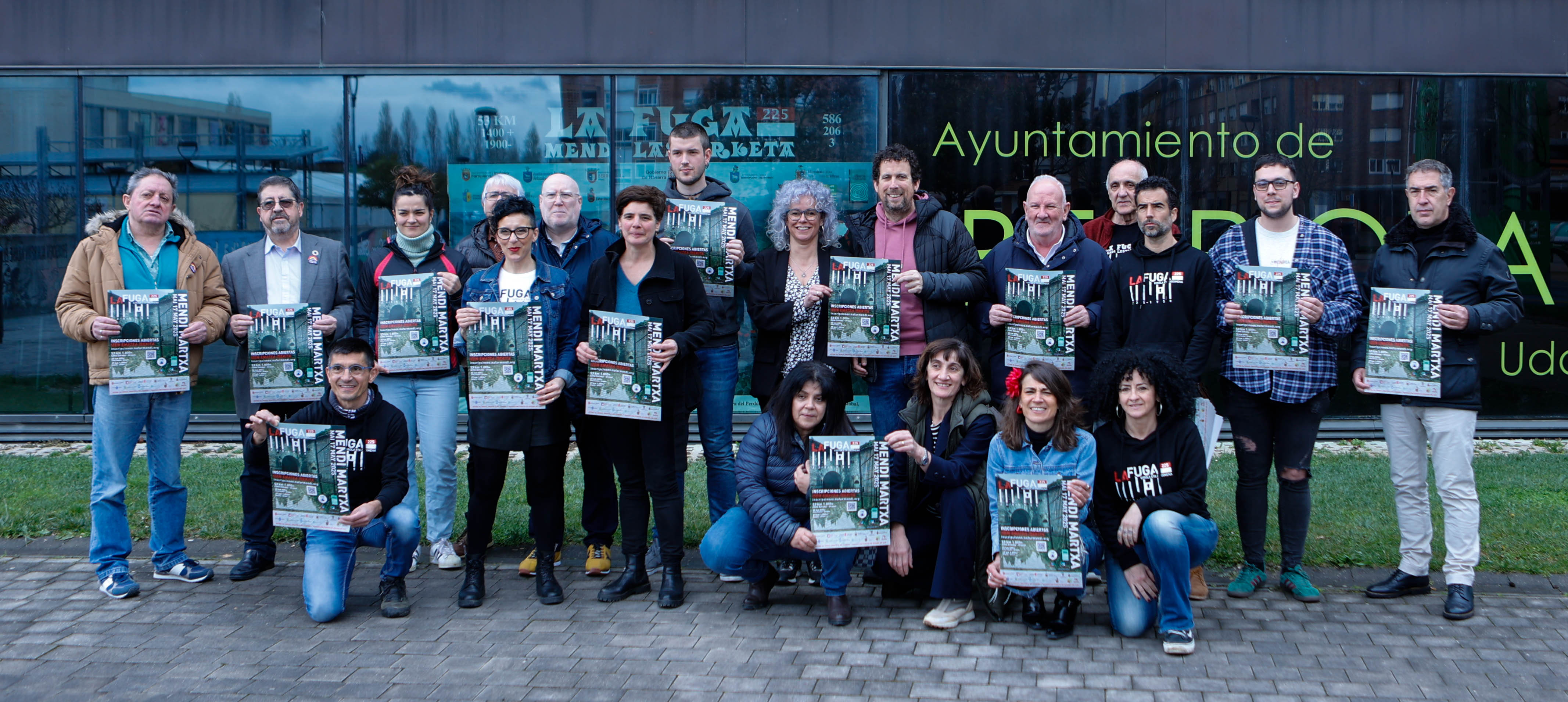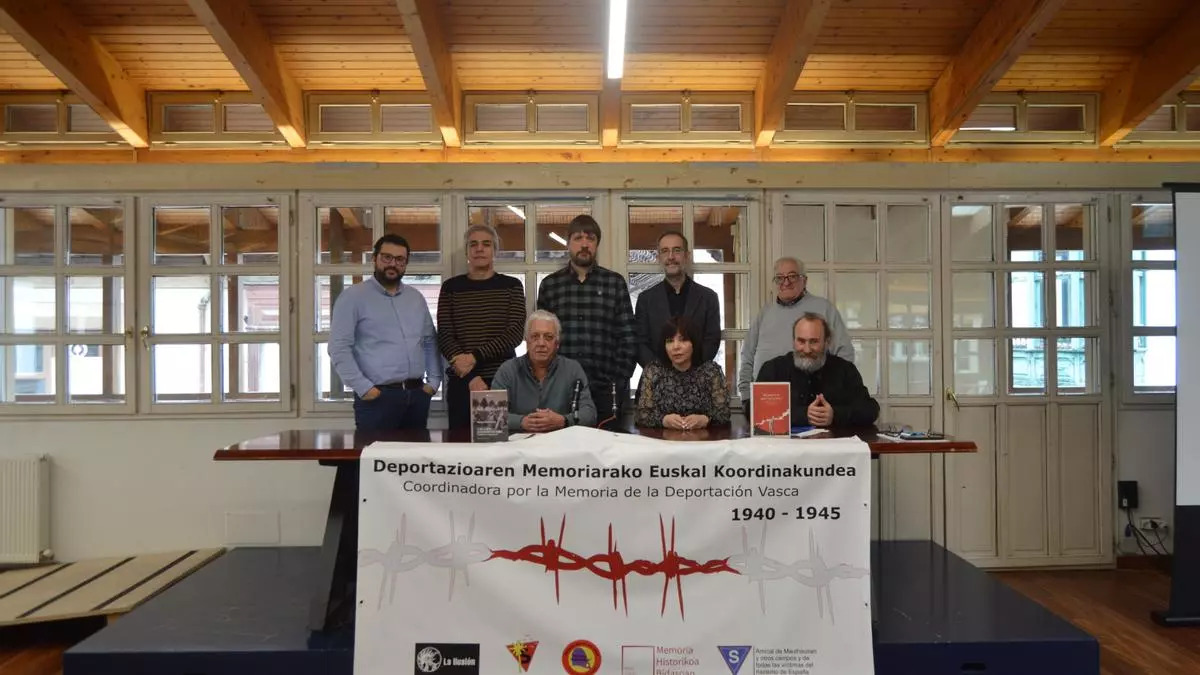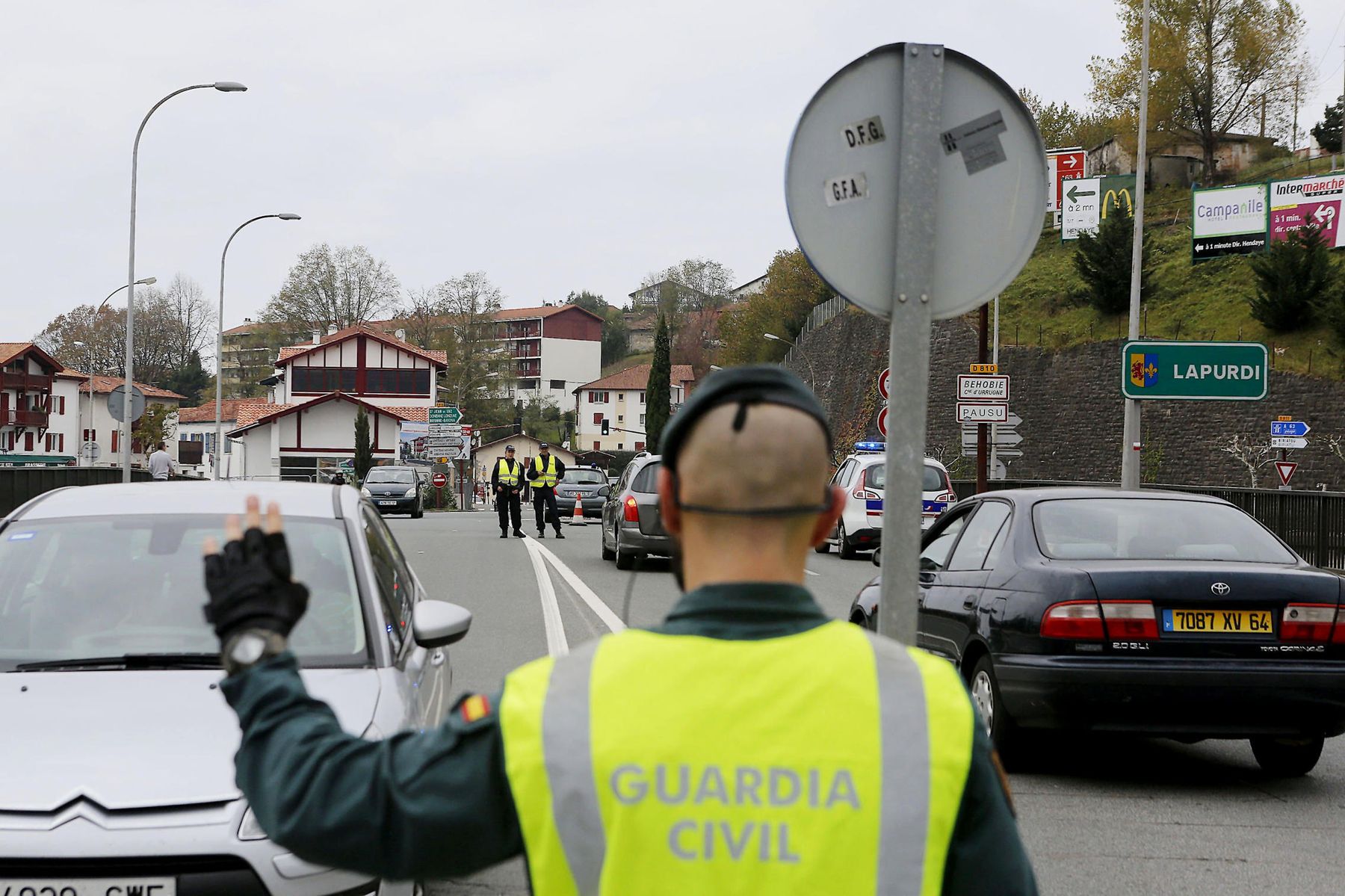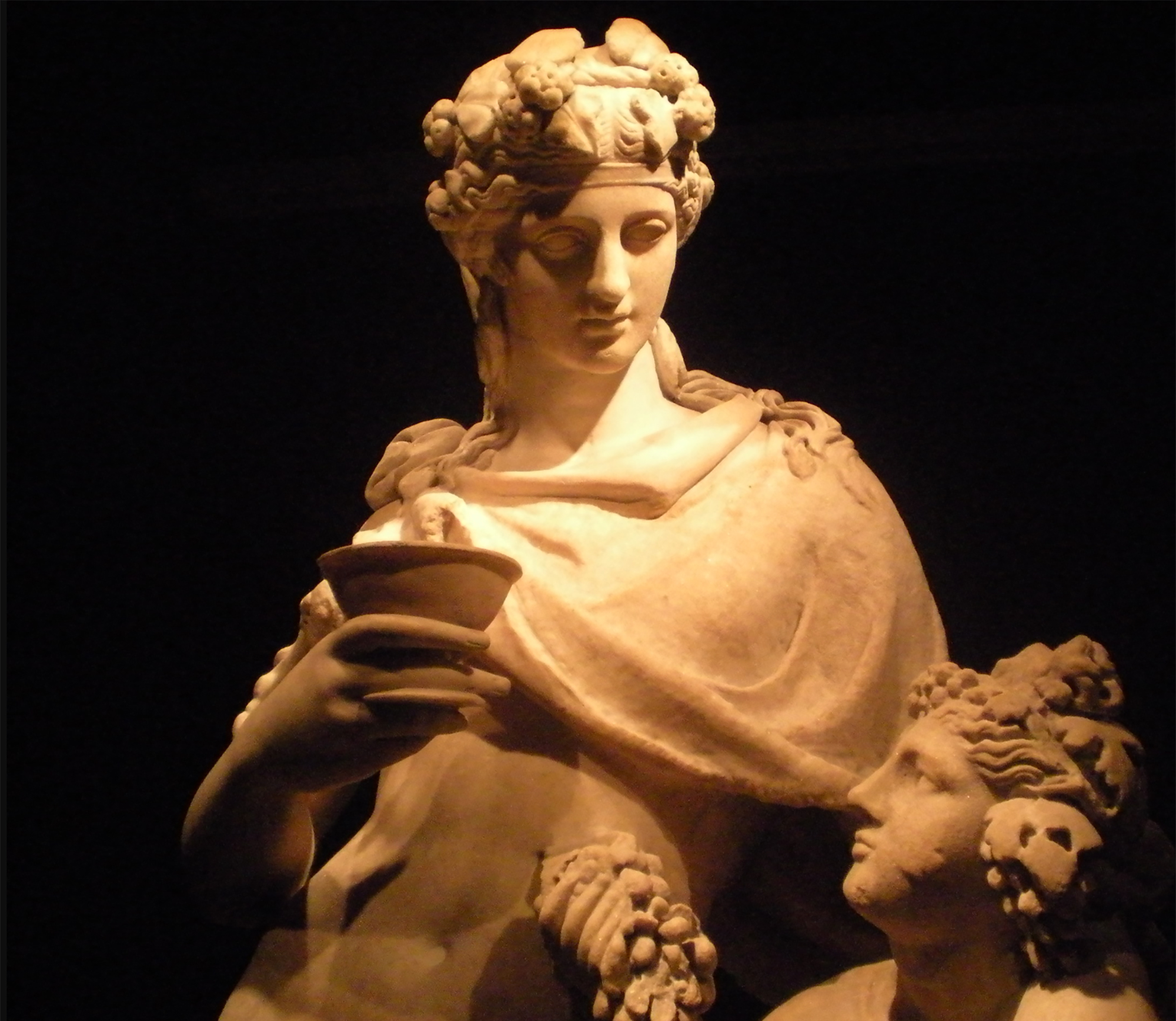"The double and h sounds aspirated by the teonym Larrahe are not Latin, acitonic or basconic, that is, related to the creation of the Basque Country"
They say that you have made an archaeological discovery of great importance. What have you found?
An altar written in stone from the 1st century after Christ. For us, it's a message 2,000 years ago, like a capsule, that has appeared to us in the subsurface. It was a great surprise.
Where have you found it?
Saturdays This is a small town of 67 inhabitants. It is located next to Irurtzun, 20 kilometers north of Pamplona, in the municipality of Iza Cendea. There they have always had a mound, the Arriaundi. He was also called St. Gregory. It has a height of 942 meters. From the south to Pamplona, it has a beautiful precipice. The stone is calcarenite. It's a 40-meter canyoning. It's protected from there. But in the North it has a turf that comes down slowly and then a hayedo. The tip of the mountain is a pretty large field. There we find the altar.
You are the excavation director. What were you doing, what were you looking for? Because you are specialized in the Middle Ages.
Sometimes we are archaeologists who want to investigate something: castles, paleolithic residences or anything else. But other times the locals call us to research: "On this top of our mountain there are some walls, and our grandmother and dad called the hermitage of St. Gregory." They wanted to take us, but they didn't have money. On our first visit to Arriaundi, with a first glance, we realized it was a special place because of its location. It's a mountain that you can't see, but from that mountain everything looks. From there you see the old Pamplona. From there you see Arakil and the whole Barranca, to Aizkorri. You see all the mountains of Larrun, Aralar, Pyrenees... It's easy to get there, but it's hidden. Archaeologists, like mushroom harvesters, have a special smell for it. It was a beautiful place, where citizens were excited and in 2010 we decided to start working there.
At first they were looking for a hermitage, right?
We went looking for a sixteenth or seventeenth century hermitage, called St. Gregory. This happens many times: The hermitage of San Donato and Mount Beriain, for example. Mount Arriaundi is also called San Gregorio. And San Gregorio is relatively new in Navarra. It opened in the 17th century. We started moving the land, and in 2011, we discovered the shape of the walls, the type of stone carving, the semicircular apside, which was a medieval church, not a 17th-century hermitage. We said, here's something older. In 2012, we had another larger semicircular apside, which was already a big surprise. It was clear that it was not a hermitage but a larger building. Thus emerged the head of an 11th century monastery, the upper part, with three priests, fully symmetrical, of the Romanesque era. In Arriaundi we raised our eyes and looked up at San Miguel Viejo. The head of the Old Church of San Miguel was three priests, twin of Arriaundi. This was already important. The Kingdom of Navarre was not yet born, we were in the Kingdom of Pamplona. This has been our greatest and most surprising discovery from the architectural point of view of the Romanesque, as it is a lost monastery, and sometimes we have found walls with a meter high and well preserved with all the foundation.
And one day you found a well.
On August 27, 2022, we were surprised, yes. We were working on a Hacienda annexed to the monastery, with a rectangular base. We were cleaning up the ground. On the top of the mountain, with the wind, with the rains, with the stones removed by the peasants... Everything was down, full of waste. We were cleaning that up. The soil that appeared to us was dirt. They're not all stone slabs like in movies. Small pieces of ceramic, some coin, iron nails appeared. And while we were raising the ground in a certain area, on that Saturday we had the upper part of a well of water, completely circular, with the stones very well placed, with a diameter of one meter. Water wells are always interesting for archaeologists. We're curious. They would use it to store the water, as the source is within half an hour. And so we started to take land out of the well.
The earth began to come out and they met the altar. When? How? Who? How was the time?
It was presented on a very propitious day. Once a year we all celebrate a working day in Auzolan, to which we invite a researcher: Txarli Martínez Alava to talk about Romanesque architecture, Javier Velaza to talk about the Roman era, or Aitor Pescador to analyze the Conquest of Navarra. On Saturday, Joseba Asiron was invited as a historian. There were fifty people up there. In these cases the weeds are removed, the panels are placed, everything is fixed, then we hear the researcher's intervention while we eat the paella. Then the cook, Marimar, told me that there was still a quarter of an hour to finish the paella. That is why we continue to flush the well. Pello Esain got into the well to pull the ground out with a small shovel. He sat next to Patxi Goroskieta. And I started writing to the folder. One day Patxi told me: "There is a stone appearing and it's carved, it has a special shape." Like Pello Esain: "Yes, yes, Juantxo, this is different." I looked at myself and stood up, excited, with an immense surprise. In the first course of historical studies we were taught a stone altar typical of the Roman era. I couldn't believe. I started screaming. We call everybody. People didn't understand why I was so nervous. He also approached Asiro asking what was going on. I told them that we had the altar of the Roman era, we told Pello to clean the altar with his hand to see if it had anything written. He turned around and told us it was written.
"This altar 150 years longer than the hand of Irulegi reaffirms what has been said so far"
Wow, time.
Related to archaeology, it was the most exciting moment of my life. The most exciting one. I have lived the hand of Irulegi, also the sword of Amaiur.
He has been the director of Amaiur excavations.
That is, but at that time we were investigating Irulegi's hand, secretly and calmly. That's what we had in mind. Finding in the subsoil something written from the past is always a very special thing. And at the time, his explanation, when we had Irulegi's hand in the head, and we knew consciously that we were at an important time, was very special. The hand of Irulegi appeared in the laboratory, in the laboratory of Restoration of the Government of Navarra. This emotion was a feeling developed over the weeks. And Larumbe's, instead, in a moment.
Altars of this kind were typical of the 1st century after Christ, right?
In the Roman world, throughout the Mediterranean, there was a fashion that spread throughout the empire: the stone worms or the pantheons, in which it was written in Latin. There are thousands. In honor of the emperors, or by the passage of a Roman road through the Pyrenees to put it as a sign, or by the death of someone...
How large is the altar of Larunbe?
It has a height of half a meter and 27 kilos. The sides are 14 centimeters. It's a small stone altar.
Therefore, what is unique is the resounding. What is sculpted?
In these cases, the writing is always in Latin, in the Latin alphabet. Here are some formulas from the Roman era. A woman offers this stone altar to a god. And there's his first and last name, Cognomen, Valeria Vitella. A woman orders to do so. God offers a woman. This was very common: as I am sick, if you heal me I will make an altar of stone; or if this year we have a good harvest, I will make that offer; or if my husband who has gone to war is doing well. There is always a deal with the gods and the woman has a direct relationship with the gods. Therefore, it is the usual formula: Val(eria). Tel. m(erito). Ra he. vo(tum) l(ibens) s(oblit)" This formula is extended throughout the empire.
So things, the key word, which gives value to the altar, is Larrahe. They say it is the name of a Basque god. Why?
We archaeologists do not know much about the headings, but we have at our side long-standing researchers: on the one hand, Javier Velaza, professor at the University of Barcelona, Castejón; on the other hand, Joaquin Gorrotxategi, professor of Indo-European philology at the UPV, and a reference in the creation of the Basque world. The same day we made the discovery, we talked to them. You've seen hundreds of them in 40 years. They read it straight away and immediately said that Larrahe enters directly into the world of the Basques, in the Basque language and in the creation of the Basque language.
Can't it be Greek, Latin or Ibero?
No, because they don't have such a god, because they don't have double r and they don't have aspirated h. And here's also the concept of authorityness. Velaza and Gorrotxategi. When we studied at the university of Vitoria some time ago, we read the articles by Gorrotxategi and Koldo Mitxelena, as well as those by her predecessors. Where are the first words related to Euskera? Bibliography around the world always mentions: in the Roman era, things began to be written when the Romans arrived, especially in tribute to the gods and in the altars of stone.
“This discovery has come from the bottom up: the curiosity of Saturdays and the vexity have led us to find the altar”
When presenting the hand of Irulegi, Velaza and Gorrotxategi said that the sign was Basque or Old Basque. Later, in the journal Fontes Linguae Vasconum, other experts affirm that this cannot be assured. Does this discovery affect this debate?
Good question. Everyone will join this discovery. The hand of Irulegi has been a revolution. When there are no written witnesses, our linguists must create models to analyze the past. If nothing is written, as in Greece, they create models based on their knowledge. When Irulegi's hand appears, some of these models get on their feet. So they did a monograph in Fontes Linguae Vasconum magazine on Irulegi's hand. Everyone who wrote here agrees that the site is very important and this group of young archaeologists has worked very well. They thank us for that. And we thank them. In this magazine, the experts, the linguists, don't agree with each other. We have welcomed this publication with great joy because that is the proof of the importance of our discovery. We are archaeologists, we know how to take things underground, but we don't know languages. That is why we are working very fruitfully with both Javier Velaza and Joaquín Gorrotxategi. Together with them, we made a news release two weeks after we made the discovery of the hand known. The journal Antiquity from the University of Cambridge is one of the most important in archaeology, in which we have published an article. La Paleohispanica is the most representative scientific journal in the peninsula and we have published another article in it. Therefore, in one year we have four reference publications, very academic. Irulegi's hand opens us a path. The Romans are coming to the County of Pamplona and, look, the Vascones are already literate. And then this has been explained.
Larrahe had already been explained in these kinds of markers, right?
There are three more references, yes. In Estella, specifically in Andelos, Muruzábal and Irujo. That is why this discovery attaches importance to everything that has been said before. In the academic path, in the research path, this corroborates something we already knew and extends the territory.
For location purposes: Hand of Irulegi a. C. It's from the 1st century, and the Larumbe variant is from the 3rd century. 1st century
Specifically, Irulegi's hand a. C. 75 years before and the altar of Larunbe. 50 to 100 years old. I mean, Irulegi's hand is 150 years older.
Who was Valeria Vitella?
That's the question. It's a person and a woman. Last name in Latin: Valeria and Vitella. Vitella is a calf in Basque. It is he who makes the offer. But we don't know what language he spoke in. We don't know if Valeria understood Latin and was literate. What we know is that he himself ordered to do that ritual and within that ritual writing is important. And within the rituals, that he knew the god Larrahe. And that god was indigenous. For example, our godmother went to Arantzazu and carried a book of Latin masses. The priest prayed to the god in Latin. Our grandmother didn't know in Latin, but she understood that it was important to pray to the god in Latin. But since his god was indigenous, a word was there in Basque: Arantzazu. This can help you understand Saturday.
Why did the altar melt into the well?
This is the second question, and we have no answer. We know that this stone altar is set in the first century. There will be a structure around, as it is an altar of reading. At the top there is a small hole to make offers, pour wine or burn the incense. But we found it inside a well of water. And with the sign down, ordained, because it's not cracked. They came down and they left him there. Why didn't they throw him out of the chasm? Why didn't they use stone to build the monastery? At the same time we know that the altar has been there for 900 years, because we have analyzed the land that was on the altar, sent two dates to the Uppsala University of Sweden and told us that they are from the 11th century. So, it's been there since the 11th century. Why? What's happened, new belief, Christianity and wanting to keep it there inside? Or to take it off the top? We don't know. There are a lot of questions.
So why is the altar of Larunbe important?
Looking back at the past, we always miss two things that don't appear in official history, in our writings, and that are fellow travellers. One is the Basque and the other is the woman. We cannot understand that our Navarre, our Basque country without Euskera and without women, and the altar of Larunbe explains that for years both have been protagonists.
The position is also important, right? The quotes of the god Larrahe have always been further south.
Now we have another point, much further north. Since when is the Basque country in Irurtzun, in the Sakana area, in Arakil? The oldest quote is this.
For those who want further explanations, they will often publish a book on the altar of Larunbe and a short documentary.
In a few days we will have books for sale. It will be similar to what we take for Irulegi. Thanks to this book, we will get resources to drive our research. Anyone who wants to buy will be able to do so through Berria, Gara and Diario Noticias. I would like to stress that this discovery has been possible because there has been a community behind it. This is a work that was created from the bottom up. All this has been driven by the interest of the neighborhood and by the Basque character of the area. In the Saturday area, three generations ago they were Euskaldunes, but the dialect of Larunbe was lost on the road. In view of all this, a beautiful artistic wall dedicated to the god Larrahe has been installed on the fronton of the town. It's the work of the artist Iker Uribe.



